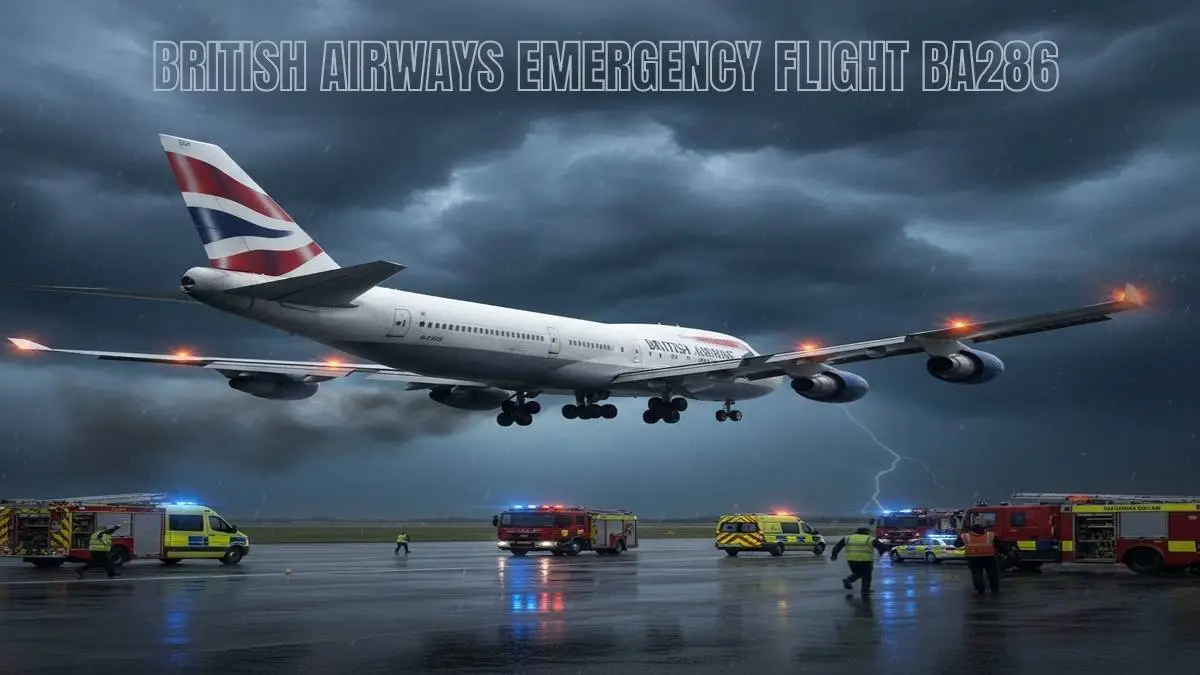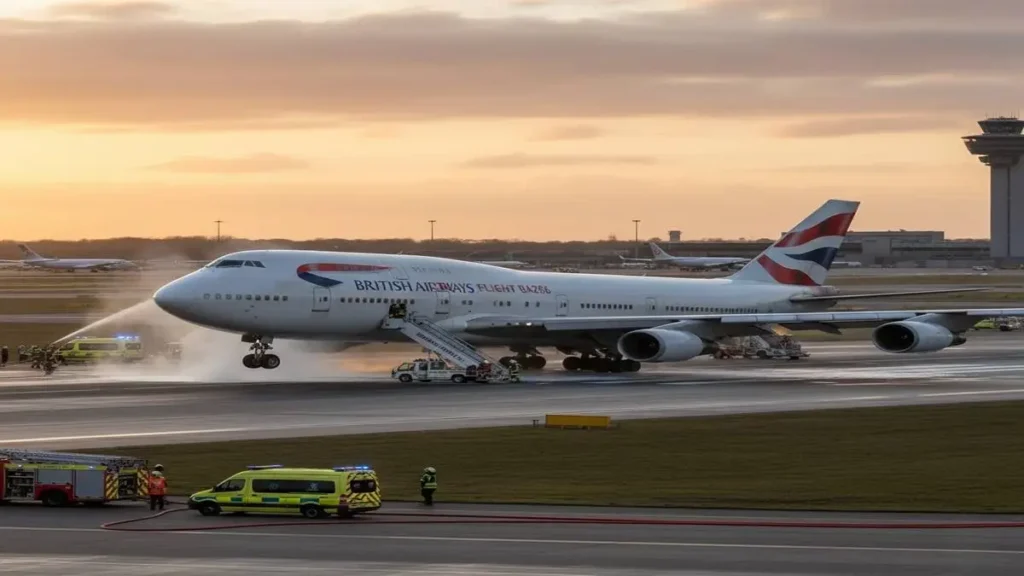GENERAL
British Airways Emergency Flight BA286 Explained

When I first saw reports about British Airways emergency flight BA286, I wanted to understand what happened, not only the headline but the timeline, the aviation procedures involved, and how passengers and crew were looked after. After reviewing flight-tracking records, airline- and aviation-community posts, and contemporaneous reports, I reconstructed the most reliable account available and explain what the event tells us about in-flight emergency response and safety systems.
Table of Contents
What The Record Shows (Summary of the Event)
According to flight-tracking data and community reporting, BA286, the British Airways Airbus A380 operating the San Francisco to London service, declared a general emergency (squawk 7700) while crossing the Atlantic in late May 2025. The aircraft continued to receive priority handling from air traffic control and landed safely at London Heathrow. The primary cause reported by several aviation sources was a medical emergency on board rather than a mechanical failure.
How Emergencies are Signaled in Flight
In my reading, the technical act of declaring an emergency is simple yet consequential: pilots set the transponder to squawk 7700, the internationally recognized code for a general emergency. That single action alerts every radar facility and controller on the flight path to provide priority handling, which can include rerouting other traffic, clear airspace, and arranging ground emergency services at the chosen diversion or destination airport. In BA286’s case, the squawk selection initiated that cascade of operational support.
Why Crews Choose to Continue Versus Divert
One question I investigated was why some flights divert immediately while others continue to the planned destination. From the material I reviewed, the decision is a complex, multidisciplinary judgment that balances the passenger’s medical condition, proximity to airports with suitable medical facilities, aircraft performance, weather, and fuel.
Reports about British Airways emergency flight BA286 make clear that the flight crew, supported by on-board medical responders and ground medical consultation, assessed the situation and opted to continue to Heathrow, where comprehensive care could be provided. That decision aligns with standard practice when a diversion would not materially improve the patient’s outcome and when the destination is suitably prepared.
The Role of Airline and Ground Coordination
What struck me about the BA286 reporting is how interconnected the response elements are: flight crew, cabin crew, airline operations, ATC, Heathrow’s emergency services and ambulance services, and any telemedicine/ground medical consultants the airline uses. Declaring an emergency triggers pre-planned coordination: ambulances and airport medical teams are ready, priority arrival sequencing is granted, and cabin crew focus on stabilizing the patient and supporting other passengers. The BA286 account illustrates these systems functioning as designed.

Passenger Experience and Safety Culture
I paid particular attention to passenger accounts circulating on social media and aviation forums. Those firsthand impressions consistently emphasized calm and professionalism from cabin crew and reassurance from the flight deck, two features I associate with a strong safety culture. Even when emergencies are stressful, crew training, clear communication, and visible leadership tend to reduce panic and help the cabin environment remain controlled. Several community posts referencing British Airways emergency flight BA286 highlighted that crew actions helped passengers feel informed and safe.
Technical Worries
Multiple sources suggested that BA286’s emergency was not the result of an aircraft systems failure; rather, the available evidence points to a medical incident on board. I treat those accounts cautiously because social posts can conflate different events, but consistent flight-tracking logs and the absence of official grounding or extended technical reports lend weight to the medical-emergency interpretation. For readers concerned about broader aircraft safety, this incident does not indicate a systemic technical problem with the A380 fleet.
Lessons I Draw from the BA286 Incident
From my synthesis of the sources, several practical lessons stand out:
- Clear emergency signaling matters. The transponder squawk 7700 remains an efficient, universal trigger that mobilizes resources quickly.
- Medical judgement drives operational choices. Crews weigh diversion vs. continuation case-by-case, and telemedicine support has become an important adjunct to in-flight care.
- Coordination reduces risk. When airlines, ATC, and airport services collaborate promptly, patient outcomes and passenger safety improve.
What Passengers Should Know and Do Before/During A Flight Emergency?
- Follow crew instructions immediately; cabin crew are trained for emergency triage and evacuation procedures.
- Keep the safety card and review safety briefings so you understand brace positions and exits.
- If you or a travelling companion has known health issues, inform the airline at check-in so preboarding assistance and medical contingency planning can be considered.
- Remain calm and assist crew where asked; clear communication helps the crew and medical responders act quickly.
On Sources, Transparency, and Uncertainty
I want to be transparent about source quality. The flight-tracking database I used offers reliable timestamped movement and squawk history; aviation community posts and social-media eyewitness accounts provided helpful on-the-ground colour but required corroboration. Where mainstream outlets were not available or the story was reported mainly via aviation sites and tracking services, I cited multiple independent sources so readers can judge credibility themselves. If authorities publish formal incident reports or airline statements later, those primary documents should take precedence.
Final Thoughts
Writing about British Airways emergency flight BA286 gave me a window into how modern aviation manages unpredictable human emergencies at altitude. Based on the material I examined, the event demonstrates robust systems from squawk protocols to ground coordination working together to prioritize patient care and overall safety. My synthesis is intended to be factual and measured: emergencies happen, but the aviation system’s layered defenses and professional responders are designed to keep people safe.
-

 GENERAL5 months ago
GENERAL5 months agoChristofle – For Those Who Dream of Family Heirloom Silver
-

 SPORTS7 months ago
SPORTS7 months agoDiscover the World of Football with Streameast: Watch Your Favorite Leagues and Tournaments
-

 GENERAL4 months ago
GENERAL4 months agoUncovering the World of кинокрадко: The Dark Side of Film Piracy
-

 GENERAL2 months ago
GENERAL2 months agoATFBooru: Anime, Gaming, and Subculture Imageboard























